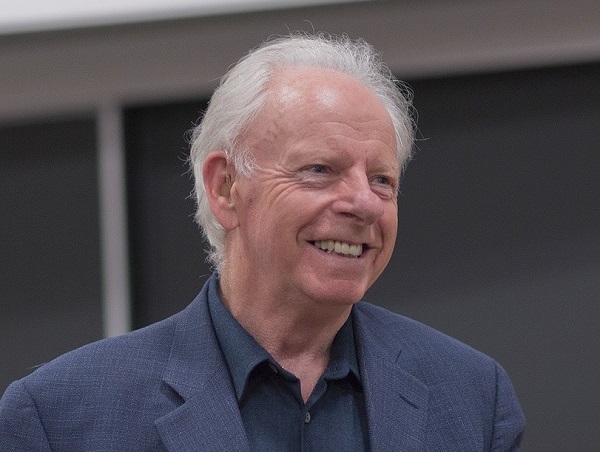Teaching skills are an important factor for all teachers aspiring to lead and guide their classroom. Such skills are indispensable for teachers who affect the lives of students much more than we can ever imagine.
A teacher with the right skills is able to inspire and influence the student’s entire life and even ignite great ideas and help them unleash their true potential.
To make such long-term effect, let’s take a look at some of the most essential skills outstanding teachers use.
Table of Contents
Essential Teaching Skills for Active Learning
Active learning is the academic activities through which a professor seeks to involve students in the work of specific activities and stimulate their thinking.
Here are some of the best teaching methods for active learning:
- Thinking and exchanging ideas
- The tough part
- Paraphrasing
- Let you students evaluate their colleagues’ work
- Encourage students to write their diaries
1. Teaching Skills: Thinking and Exchanging ideas
First, thinking and exchanging ideas are some of the strategies and skills needed for an outstanding professor.
Ideas increase interchangeably in this method. This way, each student thinks separately and comes up with his/her ideas within one minute on a specific topic, question, or problem raised by the professor.

After that, each pair of students exchanges their ideas with each other. And such teaching skills can be modified in a way so that each pair of students is able to enrich the discussion as best as they could.
Finally, students discuss their ideas in groups. This method develops a lot of things in students, e.g., dialogue, discussion, and exchange of opinion while teaching them to also respect each other.
This activity is easy to do; it is simple to apply it to all students of different intellectual levels and among different numbers (from 3 to 100 students).
Automate your exam creation process with our automatic exam generation algorithm. Request a Free Demo now.
2. The Tough Part
Second, the “tough part” is one of the most important elements for developing your teaching skills.
This method is one of the classroom reliable assessment strategies that enhance the lecturer’s teaching skills. It is designed to provide you and your students with helpful comments about the teaching and learning processes.

The “tough part” method is one of the simplest classroom assessment strategies in a wide variety of teaching skills. It helps the teacher assess the problems students face.
In this method of teaching, the lecturer asks students about the most difficult parts. Here is an example of this: “What are the most difficult parts of lecture, discussion, homework, film, or something else?”
Each student writes what is difficult without writing the name. The professor collects the answers and analyzes them to identify the most difficult parts of the lesson, in the eyes of the majority of students. And then hold another lecture belonging to the same lesson to re-explain it or explain it from a different perspective.
“Any questions?” Or “What is the most difficult point in the lesson?”
The difference between “What is the most difficult point in a lesson?” And the traditional question that some teachers ask “Do you have any questions?” very big. The answer is usually silence on the usual question. Asking students about the hardest part of the lesson motivates them more to respond, interact with you, comment on teaching, course content, etc.
3. Paraphrasing Is One of Most Effective Teaching Skills
In this method, the teacher explains part of the lesson and gives it an appropriate title. They then ask their students to give them another title for the lesson in question. And according to the answers the teacher receives from them they realize how much they understand the lesson.
Paraphrasing is generally seen as just copying some information from the source text and changing only a few words. Many even think that such a process rarely leads to retaining the information or any benefit at all because the copying process takes place almost automatically, i.e., without much conscious thought.
On the contrary, learning to paraphrase and practice properly includes reading and writing carefully and listening well to the lecturer or speaker, thus stimulating the frontal lobe in the brain and leading to full and clear understanding of the lesson.
4. Get Students to Evaluate Each Others’ Work
Here, the professor gives students homework. On the day the assignment is delivered, each student submits two copies, one to the teacher and one to their colleague.
Students, this way, get to review, correct, and write a quick summary of their objective opinions on their colleagues’ work. This activity is one of the most interactive and fun activities in teaching methods!
Wondering what’s next in the assessment tech? Check out Qorrect assessment system Youtube channel now!
5. Encourage Students to Write Their Diaries
Some teachers ask their students to go home and write in reflection about their experiences during the day. They encourage them to record their diaries as a way to practice their writing skills. This strengthens their skills to solve problems and creative thinking.
And you’ll find that the more students write, the more they want to do it! Since reading and writing go hand in hand, it will also be useful to know that you are part of them having strong literacy skills that will undoubtedly benefit them in the future.
Effective Teaching Skills for Distance Learning
Whether you have tried online education before or not, the experience of distance learning in most schools, universities, and institutes is new and not expected .. at least in such time of emergency.
Distance learning in theory is not difficult, but in practice it requires a different approach than was the case on campus.
So here are 5 teaching tips that a group of distance learning and distance education specialists reveal to us:
- Be present
- Use technological tools
- Time your educational videos
- Use FAQs
- Test your students using Qorrect electronic exam system
1. Post-COVID-19: Being Present is a Big Part of Teaching Skills
A professor’s role in the lecture on the campus is not only about providing students with educational materials, but their activities are also numerous.
A teacher interprets, elaborates on the explanation, indicates to a student the importance of carrying out research, guides students, and answers other questions. Further, teachers are always present and ready to offer help and support to their students.

Now, with many schools and universities starting distance education or online education, the role of professors has not changed much from what it was before the COVID-19 emergency. However, their responsibilities have definitely increased. Therefore, we need to highlight some of the online teaching skills you can use.
Before, there used to be a schedule of lectures and assignments that professors had to do.. Each lecture had to be on time.
This is not really the case now. Without a well-planned class, it may take a long time to just have real interaction with students online.
Scheduling Lectures
In this case, you can schedule your lecture to truly interact with your students online. For example, specify the hours you can spend online every week to be present and interact with your students:
- You can communicate with your students online through the various free platforms available on the Internet.
- Provide a weekly summary of lectures, previous week’s lessons, or an overview of the topics for next week’s lectures.
- You can also collect students’ questions, record a short video in response to them, and post it online.
Being constantly online and your continued interaction with students encourages them to take an interest in their lessons and look towards the future.
Such teaching skills are especially necessary under the current conditions that require them to be present all day at home for months, something they are not accustomed to and completely clashes with the nature of today’s youth.

Flower Darby, an internet lecturer at Northern Arizona University and author of “Small Teaching Online”, co-author with James M. Lange, “In exceptional circumstances such as sudden closings, teachers tend to upload study materials for students to dissolve and return.
But distance education during college closure—especially during extended closings—must be at least as interactive as it was in the classroom experience, otherwise students will suffer.”
So Darby suggests the following teaching skills:
- Divide your lectures into small topics.
- Set clear guidelines of what you expect from them as a teacher and how they could contact you.
- Rapid response to students by checking students’ knowledge online, comments on students’ files, and discussions.
- Conducting live online lectures and educational videos to maintain the human educational aspect.
Computerized exams systems should be secure, easy-to-use, and simple. Find all 3 features by requesting a FREE demo now.
2. Technological Tools Give Your Teaching Skills a Big Boost
It is not easy to talk in front of a camera. We understand this feeling very well. But it is exactly what students need right now!
Research published at the American Psychological Foundation revealed the importance of the lecturer or professor looking at the camera (i.e., facing students, eye contact).

As researchers note, online lectures showing the face of the lecturer were more influential for students than videos that were restricted to the material presented being explained.
Simultaneously, this goes with what Dr. Tony Bates recommends. Dr. Bates is a consultant specialized in planning online and distance education planning and management for more than 40 educational institutions in 25 countries. He also holds 11 books in the field of online education and distance education.
Dr. Bates’ defends this theory saying that video conferences bring life to the class so the student feels like you are talking to them directly and that there is a real interaction between the two of you.
But if there is no way to hold a lecture across any of the video conference platforms available online, to get the most benefit, you can record a video of the lecture in which the explanatory file overlaps with your videos during the explanation.
This amazing video will definitely help you in that matter. It reveals a quick way of holding a lecture for your students with minimal effort through your mobile phone with only simple applications in only a few minutes.
3. Average Time of an Online Lecture Is 3 Minutes
In an analysis on edX, Philip, an assistant professor at the University of Rochester School of Computer Science, says the best duration for any video should be 6 minutes or less. The average student engagement time on the site is a maximum of 6 minutes, regardless of its duration. The reaction rate decreases as the video lengthens.
For example, “students spent around 3 minutes on videos that are longer than 12 minutes, which means that they engaged with less than a quarter of the content.”

This is average engagement time vs. video duration, after studying more than several million video watching sessions on the website.
You will even notice that YouTube videos and even TED conversations are 8-20 minutes long.
If the topic of the lecture is not enough to explain in this short period, you can cut the video into two or three parts!
Research and studies have proven that the student’s interaction with the material is necessary in order to absorb it and preserve the information in the long-term memory.
So it is essential to do something that lead students to think about the materials and understand them. Consequently, many professors tend to pause during the lecture and ask students if they are following or if they have any comments or questions, a great way to refresh minds and give them a boost of energy.
4. FAQs Help Teachers Save Time and Effort
Jill Allred, a university professor with more than 30 years of experience in the field, recommends setting up a section on the educational site you use or on a group on Facebook to answer the frequently asked questions your students ask about the subject.
This idea is great and will definitely help you communicate more with students and provide them with a fast way through which they can get the information they need directly from you at any time!
5. Test Your Students using Qorrect Online Assessment System
School and university professors can now remotely test students at any time in preparation for the exams, with Qorrect online assessment system.
Many colleges and institutes have already taken the initiative to adopt Qorrect system after its success in the first official trial of assessments online under the supervision of His Excellency the Minister of Higher Education and the Secretary-General of the Supreme Council of Universities.
In our previous article, we discussed how online assessment can be held remotely and easily with advanced algorithms.
You can also prevent cheating entirely by creating multiple forms of the same test with ease, in addition to revealing the results and analyzing them accurately in a few minutes with detailed and multiple reports.
Many educational institutions are now exploring the various options available for moving to distance education and online assessment, or at least to ensure that these options exist at their institution for future use in anticipation of any emergency. Fortunately, this technology is now more available than ever.
If you want to know how to conduct online assessment in your educational institution, you can book a free demo on our website to get to know more about Qorrect system.
Resources:
 Qorrect Blog
Qorrect Blog






